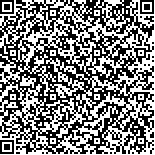下载中心
优秀审稿专家
优秀论文
相关链接
摘要

为了解决多尺度遥感图像变化检测在降噪时丢失大量高频信息及单一像素孤立性的问题,提出了一种双树复小波变换DT-CWT(Dual-tree Complex Wavelet Transform)和马尔可夫随机场MRF(Markov Random Field)相结合的非监督遥感图像变化检测算法,首先采用DT-CWT对差异图像进行多尺度分解,并根据MRF模型分割算法提取高频区域的变化特征,然后进行相应层的高、低频重构,再对重构后的各层建立MRF模型并根据贝叶斯最大后验概率准则MAP(Maximum A Posterior)进行最终分割,最后对各层分割结果进行求交融合,得到最终的变化检测结果掩膜图。对比实验结果表明,该方法在去除杂点和噪声的同时能够较好地保留高频信息,并且边缘检测更加平滑,具有较高的变化检测精度和很好的鲁棒性。
关键词:
变化检测 双树复小波变换DT-CWT MRF模型 多尺度分解Image change detection uses an algorithm that is based on multiscale analysis and Markov Random Field (MRF) model. The algorithm is widely used owing to time-frequency wavelet characteristics and the good expression to spatial correlation of the MRF model. To address the significant loss of high-frequency information during noise reduction and pixel independence in change detection of multiscale remote sensing images, this paper proposes an unsupervised change detection algorithm based on the combined dual-tree complex wavelet transform (DT-CWT) and MRF. The algorithm can be divided into the following steps. First, to enhance detail expression and objective image edges, the difference image is decomposed on a multiscale by DT-CWT. Second, the change characteristics in high-frequency regions are extracted by setting the high-frequency components of the first layer to zero and performing MRF segmentation to the other levels. Third, the high-and low-frequency sub-bands of each layer are reconstructed, and the maximum a posteriori probability is estimated by the Iterative Condition Model (ICM) based on the K-means segmentation algorithm, which fully obtains the correlation between pixels. Finally, the segmentation results of each layer are fused to obtain the mask of the final change detection result. To verify the effectiveness and stability of the proposed algorithm, the DT-CWT-Bayes, MRF-Bayes, DWT-MRF-Bayes methods, and the proposed algorithm are comparatively tested and analyzed. The contrast experiment proves that compared with the other methods, the proposed method produces change detection results for edges that subjectively look smoother and more delicate with less noise. In addition, as shown in the table of evaluation indices of the four change detection methods, the proposed method has the least total number of errors and the highest accuracy rate. Thus, the proposed method balances the reduction of tiny spots and noise and the retention of high frequency information. Moreover, the proposed method has high precision for change detection and predominant robust properties. The proposed algorithm fully uses the multidirectional expression, anisotropy, and multiscale properties of DT-CWT, which helps the expression and analysis of image information. In addition, the extraction of the change characteristics in high-frequency regions based on the segmentation algorithm of ICM better balances between noise reduction and retention of high frequency information. Finally, the final iteration and segmentation based on the MRF segmentation algorithm determines the correlation between pixels with considerably reduced false alarm rates while avoiding the influence of registration error. However, the proposed algorithm takes more time due to the existence of some iterative processes.

